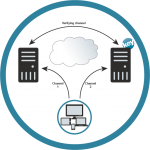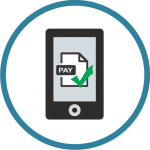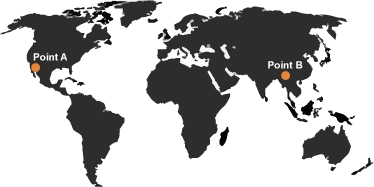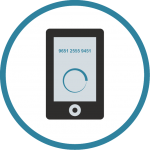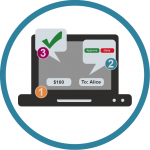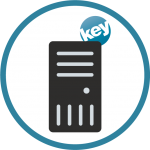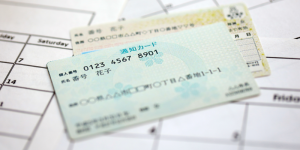
Japan is in the midst of a data security crisis. According to a recent government report, personal data breaches in the country have skyrocketed by 58% in 2024, hitting a record-breaking 21,007 reported cases — the highest number since official records began.
One of the most alarming parts of this report involves Japan’s national identification system, known as My Number. The number of incidents involving leaked My Number IDs jumped from 334 cases to 2,052 cases — a sixfold jump in just one year.
What’s Going On?
On June 10, 2025, Japan’s Personal Information Protection Commission (PPC) released its latest report on personal data security incidents during the 2024 fiscal year (ending March 2025).
Key findings:
- 21,007 personal data breaches reported, a 58% increase from the previous year.
- 19,056 cases came from private companies — a 57% surge and the highest since records began in 2017.
- 1,951 incidents were reported by public sector organizations, a 68% rise, mostly caused by human errors like sending documents to the wrong recipients.
But the biggest concern? The sharp spike in My Number ID leaks.
What Is My Number?
My Number is Japan’s national identification number system, similar to the Social Security Number (SSN) in the United States. It’s used for tax, social security, and other public services. Any leaks of these IDs pose serious risks for identity theft and fraud.
The MKSystem Security Breach: A Major Weak Point
Of the 2,052 My Number leaks in 2024, a staggering 1,726 cases were linked to a single company — MKSystem.
MKSystem is a Japanese cloud service and software provider offering labor and social insurance management systems. In 2024, their system was illegally accessed, leading to one of the largest My Number breaches Japan has ever seen.
This incident highlights the growing vulnerability of third-party vendors and cloud-based services when it comes to handling sensitive national data.
🔗 Related report: “Japan personal data leaks double in FY 2024 to record 21,000 cases”
Why These Data Breaches Matter: 9 Hidden Risks
A breach of sensitive personal information isn’t just a privacy issue. It opens the door to a range of sophisticated cyber threats. Here’s what can happen when attackers get hold of your data:
- Identity Theft & Financial Fraud
Stolen names, addresses, birth dates, insurance details, and My Number IDs can be exploited for financial scams, fraudulent account creation, and credit abuse.
- Targeted Phishing Attacks
Hackers use leaked emails and platform details to send convincing fake messages, luring victims into clicking malicious links or disclosing more personal data.
- Impersonation Scams
Criminals can hijack government or corporate email and social accounts to spread scams and malware, causing further harm.
- Financial Account Compromise
If financial account details are involved, attackers may siphon funds or make unauthorized transactions.
- Social Media Hijacking
Without two-factor authentication (2FA), compromised login credentials can give attackers control over Facebook, Instagram, Discord, and other platforms, using them for scams or fake investment schemes.
- Credential Stuffing Attacks
Hackers test leaked usernames and passwords across multiple sites. If you reuse passwords and don’t have MFA enabled, they can hijack several of your accounts at once.
- Social Engineering Attacks
With personal data in hand, scammers can impersonate bank representatives, IT support, or government officials to deceive victims via phone or video calls.
- Supply Chain Vulnerabilities
A breach in one vendor (such as MKSystem) can trigger a chain reaction, affecting numerous businesses linked to the compromised system.
- Reputational & Financial Damage
Both companies and government agencies suffer public trust issues, and victims often face long-term financial and privacy consequences.
How to Protect Yourself and Your Business
In light of Japan’s recent surge in data breaches, here are some practical steps both individuals and organizations should take to strengthen their cybersecurity defenses:
For Individuals:
- Enable Multi-Factor Authentication (MFA)
Always turn on MFA for financial services, social media, and e-commerce platforms. The U.S. Cybersecurity and Infrastructure Security Agency (CISA) reports that MFA can block 99% of account takeover attacks.
→ Keypasco MFA: Our solution offers secure access via verified devices, specific locations, and times. Patented dual-channel authentication stops Man-in-the-Middle attacks, phishing, and account takeovers, offering a more secure and cost-effective alternative to traditional SMS OTPs. Users can also securely transfer authentication via NFC and sign transactions.
- Regularly Check if Your Data Has Been Leaked
Use services like Have I Been Pwned or built-in security tools from your antivirus software to check whether your email or account credentials have been exposed.
- Think Twice Before Sharing Personal Info
Avoid entering sensitive personal details into unverified online forms, sweepstakes, or social media giveaways.
- Be Cautious with Suspicious Messages
Most cyberattacks start with phishing emails or texts. Don’t click unfamiliar links. Always verify with official support before responding.
For Businesses:
- Adopt a Zero Trust Network Access (ZTNA)
The days of relying solely on firewalls and internal networks are over. With modern threats often originating from compromised employee accounts, businesses must implement ZTA: trust no one by default, enforce continuous verification, and apply least-privilege access controls.
→ Keypasco ZTNA is a cybersecurity solution based on the Zero Trust Network Access. The product is developed with reference to standards from the U.S. NIST and CISA, as well as Taiwan’s government Zero Trust technical framework. It is certified by the National Institute of Cyber Security and employs identity verification, device authentication, and trust inference technologies to help enterprises and public/private sectors provide comprehensive and robust cybersecurity protection.- Identity Verification: Offers multi-factor authentication, including FIDO U2F and FIDO2 solutions.
- Device Authentication: Scans device attributes and software information, storing them on Keypasco servers for device validation.
- Trust Inference: Uses artificial intelligence to analyze behavior, continuously assess risk, and trigger additional authentication when needed.
- Strengthen Supply Chain Cybersecurity
Conduct periodic security audits on vendors and third-party providers. Assess their security levels and risk exposure, and establish contingency plans for potential breaches. - Cybersecurity Awareness Training
Regularly educate staff about phishing, social engineering, and proper data handling procedures. Human error remains one of the top causes of security incidents.
Keypasco not only meets international standards and real-world demands, but is trusted by government agencies, financial institutions, healthcare providers, smart buildings, and high-tech industries worldwide. As cyber threats evolve, we remain committed to empowering organizations with robust, future-ready security solutions. This ensures that they stay compliant, resilient, and ahead of the curve in a rapidly changing digital landscape.


